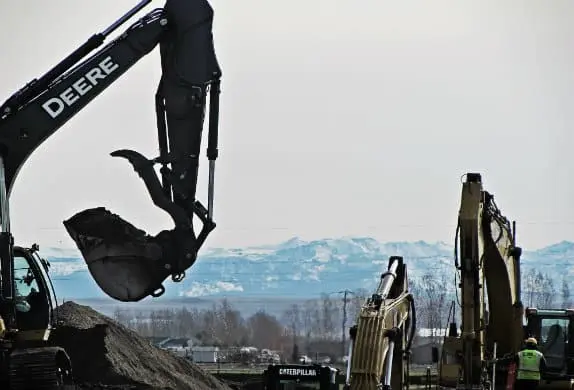
360 excavators are a crucial part of many job sites. In fact, operations from basic trenching all the way to sophisticated demolitions couldn’t exist without an excavator operated by a skilled driver.
Proper excavator safety is critical in all operations. Whether you are an experienced operator or completely new to excavation and trenching, we’ve amassed a list of 9 key excavator safety basics any operator needs to be familiar with. Be sure to save this post as a tool to refer to in the future!
1. The Best Safety Feature: You!
The most important safety feature of any piece of machinery is, of course, the operator. To maximize excavator safety, the operator should be properly trained both in operating the machine and in safety procedures to prevent damage and injury. This means going through the proper certification process and having a practical knowledge of all safety features on your excavator.
2. Safe Excavation – Knowing Before You Dig
Always call 811 or your local One-Call center to have pipelines and other underground utility lines located and marked prior to starting your project. In most states, One-Call is free (and required by law). In any state, making a call before you begin excavation is a major key to excavator safety for both the operator, the crew and the public.
3. Know Your Dangers – Undercutting and Overloading
Did you know that one of the most dangerous situations an excavator operator can create is an undercut. This occurs when the bucket is used to dig the ground beneath the excavator’s tracks, increasing the likelihood of a cave-in. Proper excavator safety techniques dictate that your excavator’s tracks should be perpendicular to the trench, in case of a cave-in. Another potential source of danger is overloading the bucket. Overloading the bucket can cause the excavator to tip over or otherwise become unstable. Operators should ensure excavator safety by being aware of the load limits for the machine.
4. Planning for Safety
To ensure proper excavator safety, the machine should be able to operate at all times, allowing the operator to dump an unstable load in an emergency. Low fuel levels may mean the excavator will shut down unexpectedly, creating a potentially dangerous and unstable situation. A visual inspection of the machine before operation is also an important step toward excavator safety, as damage to the machine or other unsafe conditions may be visually apparent.
5. Safety Around the Excavator is Everyone’s Responsibility!
It’s important to remember that when trenching with an excavator, no one is allowed in the trench while excavating is taking place. In addition, no one is allowed to be under the bucket at any time for any reason. Members of the crew should be familiar with the excavator’s range of motion and the work being done and should stay completely clear. This is a fundamental part of excavator safety.
6. Know Your Excavator’s Capacity
The lifting capacity of the excavator can be determined by consulting the load chart in the operator’s manual. Always know the limits of your excavator and never exceed the capacity laid out in the load chart at any time, for any reason, even if you think you know better. It is also important to remember that as a load is lifted & moved away from the excavator, the machine’s lifting capacity decreases. Know before you lift!
7. Preparing for the Worst – Power Line Contact
One of the most lethal possible accidents is contact with a power line. This can be fatal to the driver as well as nearby workers if proper excavator safety precautions are not taken. If any part of the excavator comes in contact with a live power line, the operator may be tempted to immediately climb down from the machine. This is very unsafe. If the operator has been unharmed in the cab, it is safest to stay put and signal for help. Those on the ground should keep people away from the area surrounding the excavator. If an excavator has made contact with a power line and it’s clear that the excavator operator is unconscious, you should call the power company and an ambulance immediately.
8. Expect the Unexpected
Not many operators would consider fire to be a major threat to excavator safety. But in the event of a fire, the cab of an excavator can become a death trap. A fire extinguisher should be in the cab of the excavator at all times.
These are just a few of the basics of safety for excavator operators. Make sure you are prepared for any scenario and any possible threat to your safety before you begin operating. For more on excavator safety training, contact us with any questions.
